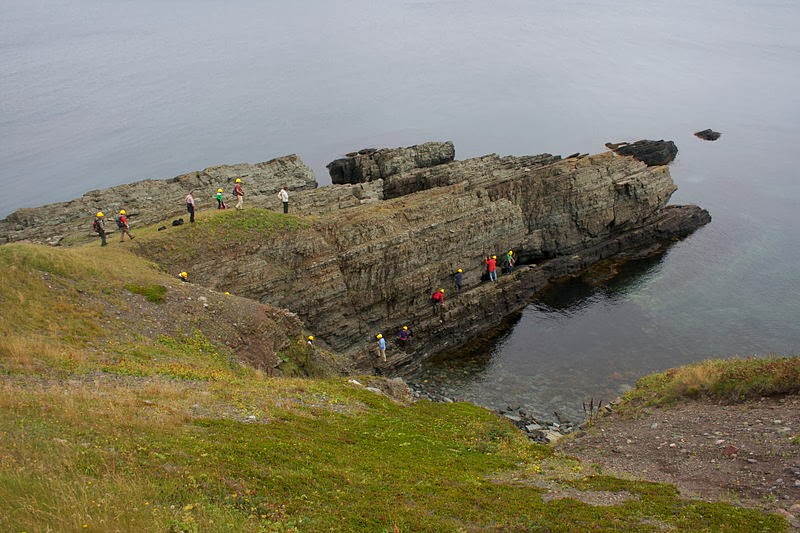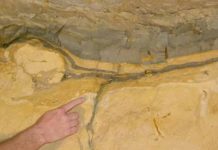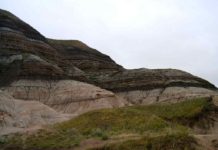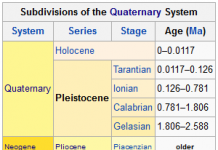
The Terreneuvian is the lowermost and oldest Series of the Cambrian geological System.Its base is defined by the first appearance datum of the trace fossil Treptichnus pedum around 541.0 ± 1.0 million years ago. Its top is defined as the first appearance of trilobites in the stratigraphic record around ~521 million years ago. This series was formally ratified by the International Commission on Stratigraphy in 2012.
The Fortunian Stage and presently unnamed Cambrian Stage 2 are the Stages within this Series. The Terreneuvian corresponds to the pre-trilobitic Cambrian.
The name Terreneuvian is derived from Terre Nueve, a French name for the island of Newfoundland, Canada, where many rocks of this age are found, including the type section.
Type locality
The type locality (GSSP) of the Terreneuvian is in Fortune Head, at the northern edge of the Burin Peninsula, Newfoundland, Canada (47.0762°N 55.8310°W). The outcrops show a carbonate-siliciclastic succession which is mapped as the Chapel Island Formation. The formation is divided into the following members that are composed of peritidal sandstones and shales (Member 1), muddy deltaic and shelf sandstones and mudstones (Member 2A), laminated siltstones (Member 2B and 3) and mudstones and limestones of the inner shelf (Member 4). The Precambrian-Cambrian boundary lies 2.4 m above the base of the second member, which is the lowest occurrence of Treptichnus pedum. The traces can be seen on the lower surface of the sandstone layers. The first calcareous shelled skeletal fossils (Ladatheca cylindrica) are 400 m above the boundary. The first trilobites appear 1400 m above the boundary, which corresponds to the beginning of the Branchian Series.
Note : The above story is based on materials provided by Wikipedia










